![]()
![]() Selected
WW2 70th Anniversaries this month:
Selected
WW2 70th Anniversaries this month:
Between
2009 and 2015, I will be pursuing a general modelling theme that
marks selected 70th Anniversaries from WW2.
|
| |
|
6
March 1942 - The Burmese
port of Rangoon
falls to the Japanese. 26 Mar - RAF Squadrons in Malta maintain 3 days of continuous fighter screen over Valletta, against massive Luftwaffe and Regia Aeronautica raids. By 29 Mar, only five serviceable RAF fighters remain. 28 Mar 1942: Operation Chariot. Sea-borne British Commando forces, led by the lend-lease Destroyer HMS CAMPBELTOWN (ex USS BUCHANAN) attack the German occupied Normandie Dry Dock at St Nazaire and placing it out of action until after the war. The RAF also attack Lubeck that night, destroying a third of the city and most of the medieval town centre. On the same day, the Auswitz extermination camp receives its first consignment. By 27 January 1945, when Soviet troops liberate the camp, between 1.3 and 2.5 million people have been killed by poison gas in this camp alone. Another half million have died of disease and starvation. |
|
GKN Warrior MCV.
3 Royal Regiment of Fusiliers, Basrah, Iraq, 2003
Revell 1/72, with various accessories.
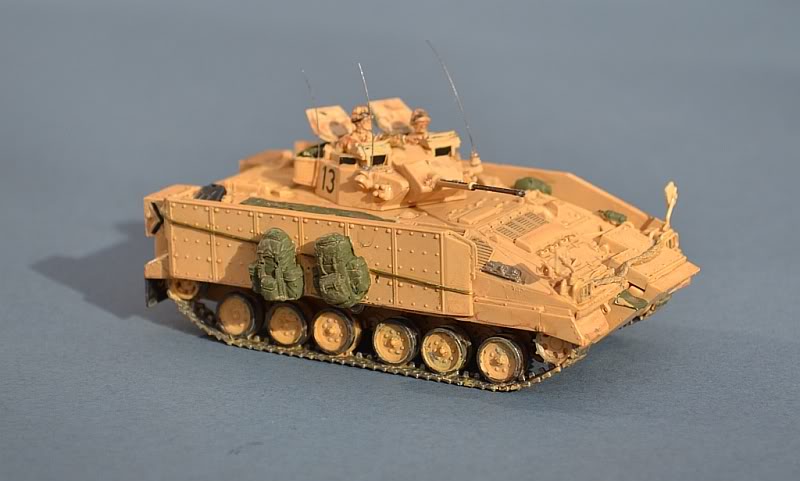
The Warrior MCV was introduced to British Army service in the early 1980s, partly to replace the ubiquitous FV430 Armoured Personnel Carrier, but also to support a new infantry concept, with fast highly mobile protected and armed vehicles transporting troops quickly around the battlefield, providing them with organic fire support from a 30mm Rarden Canon when dismounted. Apart from a few incidents in Bosnia, where the Warrior's low ground weight made is susceptible to slipping on snowy slopes, the vehicle has been a great success, seeing combat in Afghanistan, both Gulf Wars and the Former Yugoslavia. It is currently (2012) undergoing a lethality improvement programme to introduce a new turret and more powerful gun.
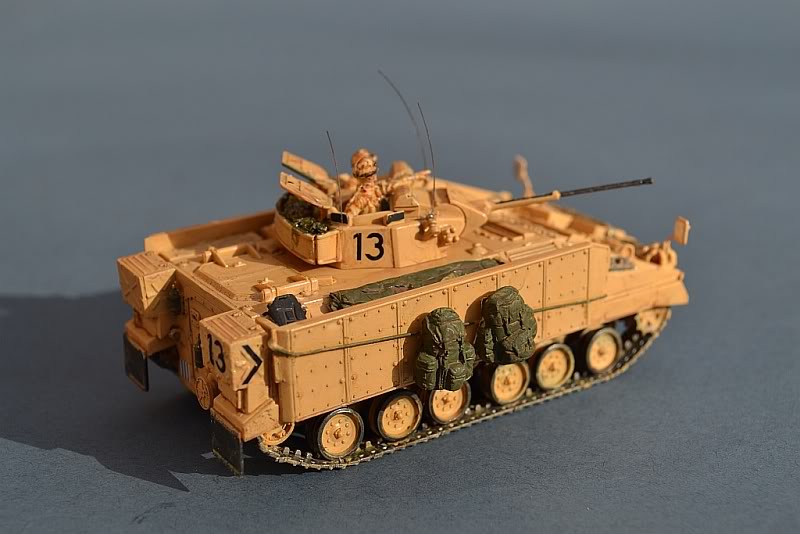
This month's cold and miserable weather made me keen to build something as a reminder of warmer climes!
Revell have produced several issues of this kit, with and without the add-on armour. The kit is superb in itself, but to add some life, I gave it two figures (trimmed Revell Modern British Infantry), some rucksacks and water tanks in the stowage (from Kingfisher Miniatures) and some silver foil-based cammo nets and stowages.
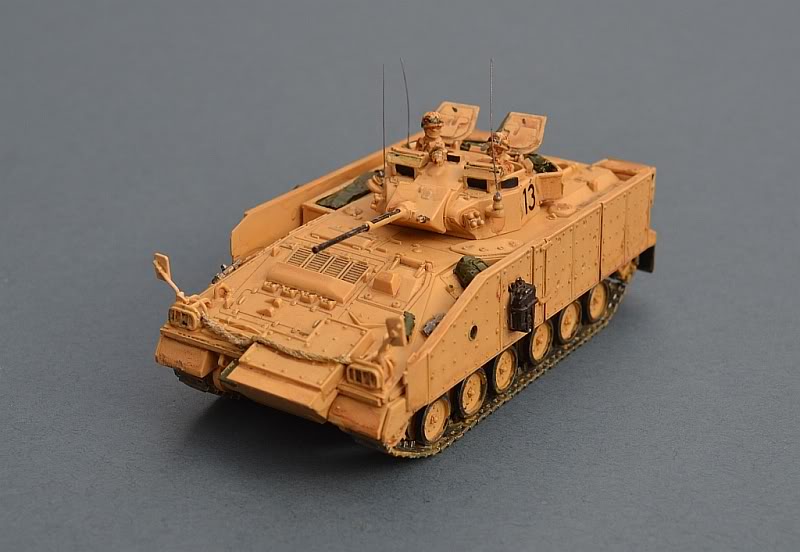
There are several links with my 70th Anniversary theme; 3RRF was formed by combining a number of Regiments, including the Royal Northumberland Fusiliers and Royal Fusiliers (City of London Regiment) who played a key role in the North Africa campaign and the Defence of Tobruk, plus the Lancashire Fusiliers, who were engaged in the opening elements of the Burma Campaign, both 70 years ago this month.
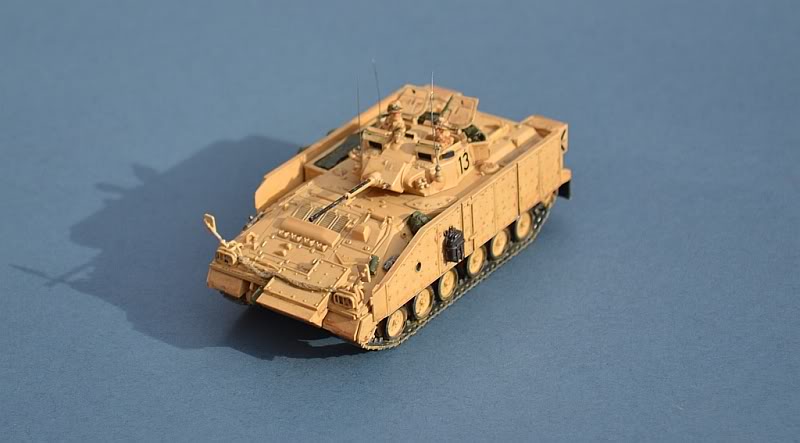
|
|
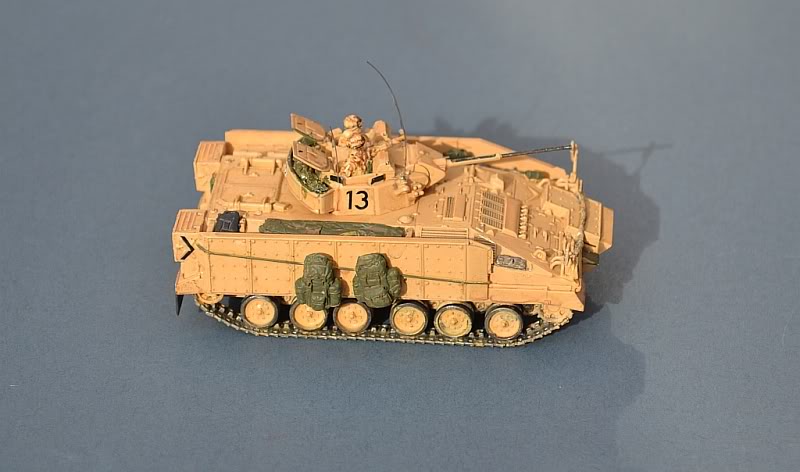
More AFVs and tanks on my Dark Side pages
249 Sqn RAF, HMS EAGLE / RAF Takali, Malta, March 1942
Airfix, 1/72 with Xtradecal markings.
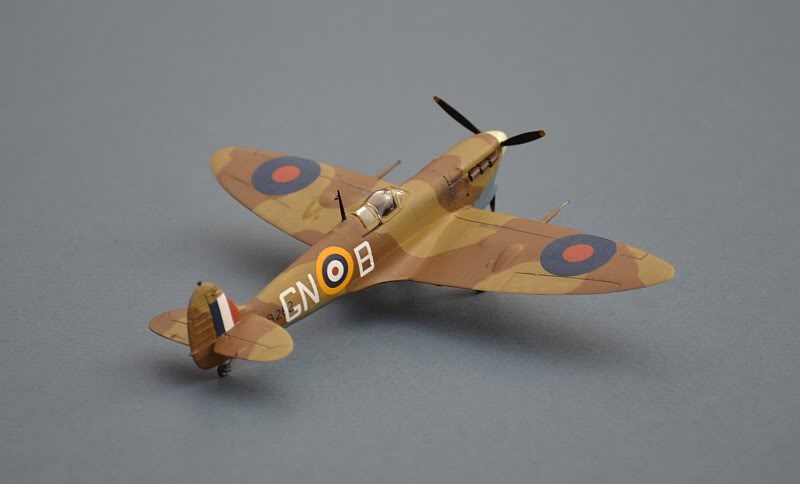
|
70 Years ago this month saw the first deliveries of 15 Spitfire Vb aircraft to the the besieged island of Malta. Transported through the Mediterranean by sea and launched from the flight deck of the carrier HMS EAGLE, at a distant position some 650 miles from the island, the Spitfires were escorted across the Med by Blenheims and shepherded in to land by Malta's Hurricanes. Their timely arrival at the height of the siege finally gave the defending air forces an aircraft that could out-match the German and Italian fighters. The aircraft depicted by this model was flown by Flying Officer Robert McNair RAF on the 18th March 1942, resulting in one damaged enemy aircraft (a Bf109). McNair arrived in Malta in a Short Sunderland (BK-B) flown from Plymouth via Gibraltar on the 1st-3rd March. Flying in a variety of Spitfires including GN-B, by the end of March McNair had destroyed a Bf109 and a Ju-88, as well as damaging 2 Ju88s and a Bf109 |
|
|
Post Building Note: Robert "Buck" McNair's son has been kind enough to get in touch with me and forwarded a copy of his father's logbook covering the events of 1st to 29th March 1942, including record of the damaged Bf109 on the 18th March (one of 4 sorties McNair flew that day). To see the logbook page in full, please click on the thumbnail image at the left |
As built, the Spitfire was equipped with simple 2 position flaps (either fully open or fully closed), intended for landing only. To enable them to take off safely from EAGLE's short 660 ft deck, wooden wedges were jammed into the flaps to prevent them closing fully. After take-off, the pilots lowered the flaps fully so that the wedges fell out, then retracted them as normal.
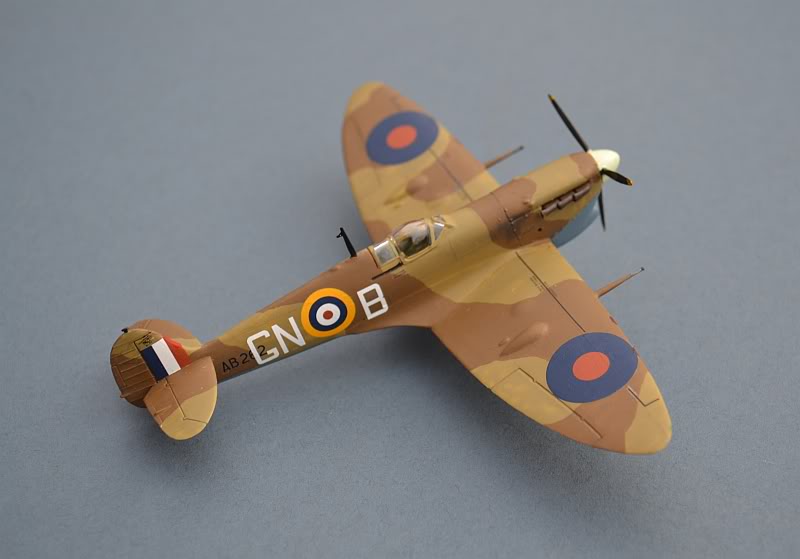
This was the first ever deployment of the Spitfire outside the European theatre; a second delivery of 9 Spitfires from HMS EAGLE arrived on 21 March. The fact that they could be spared from the defence of the UK was a clear a reflection of the growing strength and confidence of the British forces. The crews adopted the same tactics that had served so well during the Battle of Britain 2 years earlier; Spitfires stayed high and engaged the escorting fighters, whilst the Hurricanes attacked the bombers flying below.
For a day by day description of the events on Malta 70 years ago, try this link: http://maltagc70.wordpress.com/
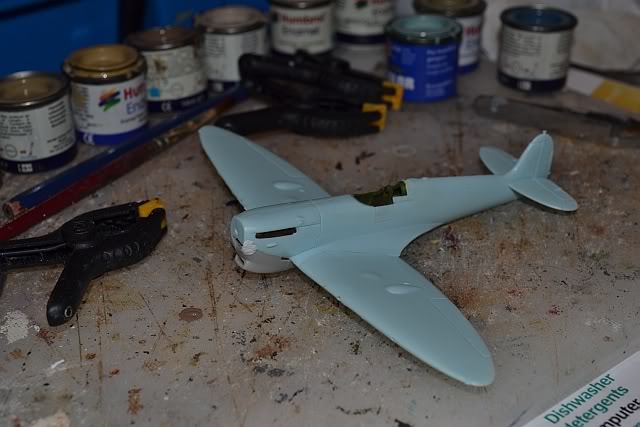
This is the old Airfix Mk Vb Spitfire kit, which can definitely still hold its own.
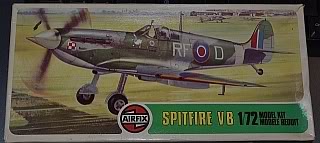
Straightforward to build, with a more accurate shape than many more recent kits, I have made some very small modifications; I added the distinctive Volkes tropical air filter under the nose, using the parts from an Airfix Mk Vc kit, changed the propeller boss for a shorter blunter one (from a Hurricane kit IIRC) and a brown paper seat harness.
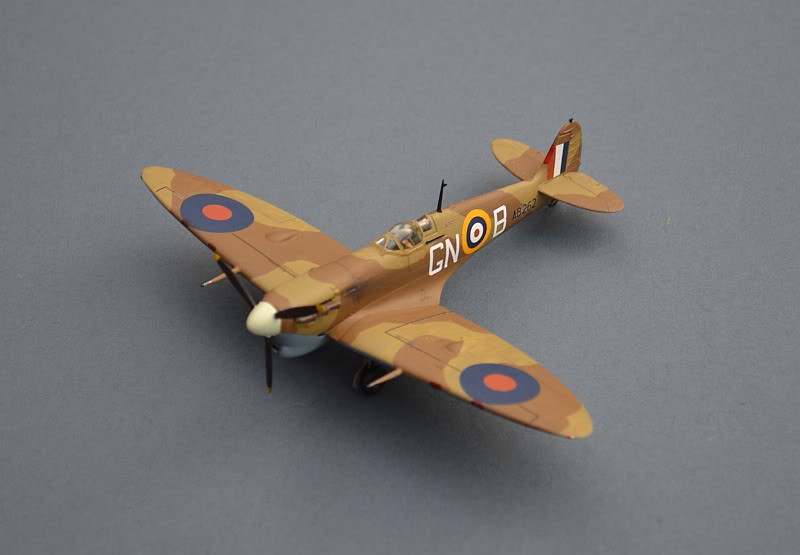
As always, the Azure blue undersides caused some heartache; having been through the whole rigmarole when I painted my desert Martlet 2 years ago, I made all the same mistakes again. Suffice to say that Humbrol 157 (supposedly RAF Azure Blue) is far, far too dark, Humbrol 144 (intemediate Blue) is far too grey and Humbrol 48 (mediterranean blue I htink - no longer made) is close, but is much too bright. In the end, I mixed white with 157 "to taste". Still slightly too dark but liveable with!!!
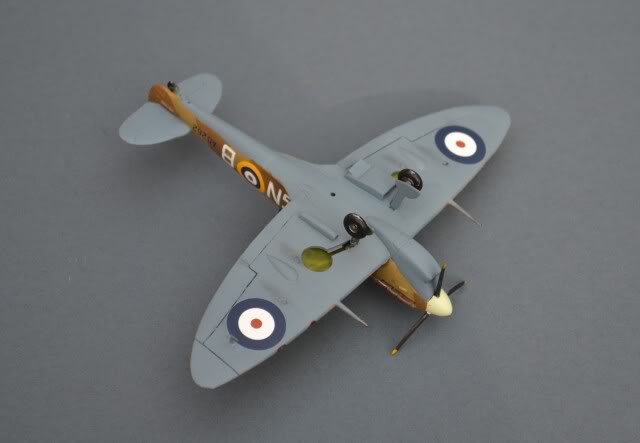
Decals come from the Xtradecal X72130 Spitfire Vb set.
More RAF Aircraft on the Friends and Allies pages
Background Picture - bomb damage in the main street of Valletta.© IWM (A 8701)
Link to previous month Link to Next Month
www.gengriz.co.uk
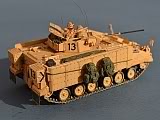
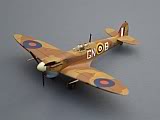
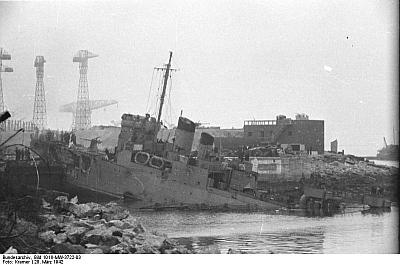
.jpg)
